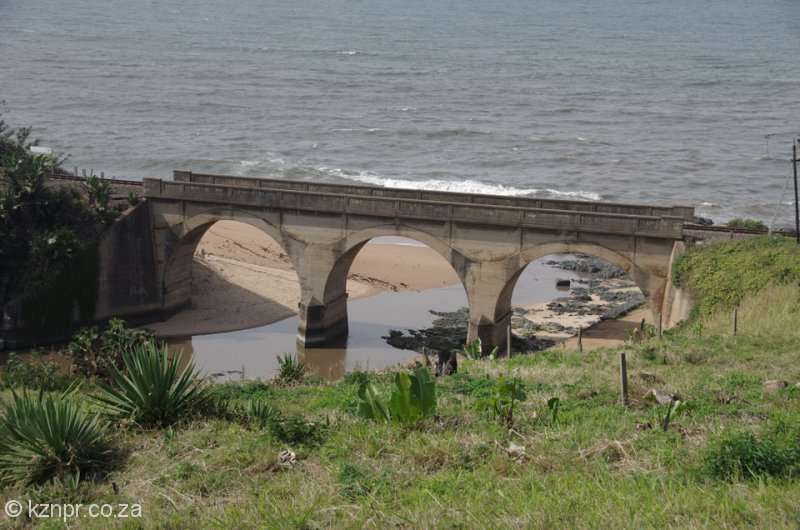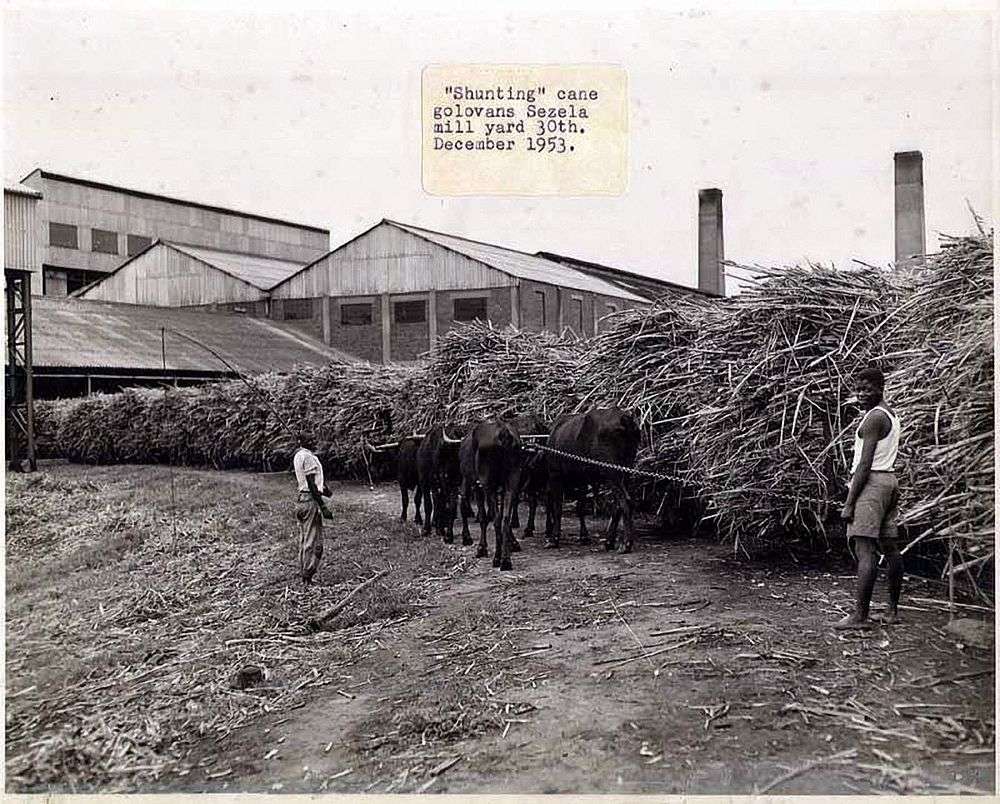Sezela


| Sezela | |
|---|---|
 Sezela  Sezela  Sezela
| |
| Coordinates: 30°25′S 30°41′E / 30.417°S 30.683°ECoordinates: 30°25′S 30°41′E / 30.417°S 30.683°E | |
| Country | South Africa |
| Province | KwaZulu-Natal |
| District | Ugu |
| Municipality | Umdoni |
| Established | 1915 |
| Area[1] | |
| • Total | 5.53 km2 (2.14 sq mi) |
| Population (2011)[1] | |
| • Total | 1,203 |
| • Density | 220/km2 (560/sq mi) |
| Racial makeup (2011)[1] | |
| • Black African | 25.7% |
| • Coloured | 1.7% |
| • Indian/Asian | 66.2% |
| • White | 5.8% |
| • Other | 0.6% |
| First languages (2011)[1] | |
| • English | 75.6% |
| • Zulu | 15.1% |
| • Xhosa | 2.1% |
| • Afrikaans | 1.7% |
| • Other | 5.5% |
| Postal code (street) | 4215 |
| PO box | 4215 |
Sezela is a small town with a big sugar mill(with an even BIGGER history) on the mouth of iSezela River in KwaZulu-Natal, South Africa. In 1828, Shaka hunted down a man-eating crocodile here called iSezela meaning the one who smells out, for it was said that it hunted like a wild dog following a trail. The river and town are named after the crocodile. 78.7km South of Durban, you will find this friendly town of iSezela.
In 1915 Reynolds Brothers opens the Sezela mills. It was later purchased by C G Smith then byIllovo Sugar and finally by Associated British Foods. In his book, Duncan du Bois gives detail on the ill treatment of the Indian indenture labour that was brought from India(below reference, a very good read). The workers had a choice to return to India after their indenture contract has expired, yet they chose to stay behind to develop this 'unknown area' into SEZELA.


The town(village) sprung up, initially separated by race/employment band. Originally, management position was reserved for the white race Apartheid legislation. Sezela is subdivided into district being, New Dheli, Oceanvale, Lower Sezela, Upper Sezela(latter 2 district does not exist). Sezela boasts 2 country clubs(Club Blue Horizon and Sezela Country Club), 2 primary school (Sezela State Aided Indian & Sezela Primary....but sadly, the names of school has changed after 1994 to climatise with the current political phase). The state aided school was heavily subsidised by the local sugar mill. The school in honour of the subsidy named the school sport 'houses' after the pioneer sugar magnates (i.e.Crookes{Canana}, Reynolds{Rose},Pigg{Protea})Galbraith{Geranium}.http://midsouthcoastrisingsun.co.za/2394/madibas-example-sees-the-job-done. Sezela is blessed with endless shore's of the Indian Ocean.The fishing ground is extremely good and the annual sardine run is enjoyed both by the locals and visitors. Famous Sezela fishing grounds, nDazingaan, Shad Cutting, Mill Rock, Gornna Rock, Rubben Bay, "A" Frame and Washing Rocks. Sezela is also very rich in terms of culture and religion. In this small town you would find the friendly church's Adonai Baptist (Pst.M Mariemuthu), Emmanuel (ECSA) and Prevailing Word Fellowship (Pst.N Sivalingam). There is also a local Siva Subramaniam Temple (Vela Naidoo) . The temple host the Kavadi Attam around January/February annually. All these religious institutions are well run by the local community. Well known Sezela family are the Muthus, George's, Sivalingams, Mariemuthu, Mudrai, Kandasami, Visser. The family 3rd generations(and some 4th) are still residents of Sezela. Well known Sezela State Aided Primary School educators are, Mr.AA Govender, MR.KK Arumugaam, Mrs.MAV Ramiah, Ms.A Puckree, Late Mr.A Banjan, Mrs.SS Banjan, Late Mr. B Naidoo, Mrs.V Reddy(nee Naidoo), Mr.KP Reddy
Sezela has produced many doctors, lawyers, chartered accountants, engineers and other profenional individuals. Commonwealth finalist(2016), Lucy Peters has her roots in Sezela. http://midsouthcoastrisingsun.co.za/2182/former-sezela-lass-is-a-finalist-in-mrs-commonwealth-pageant/ http://midsouthcoastrisingsun.co.za/4023/scottburgh-mall-celebrates-heritage-day/
Well known Sezela soccer clubs are Eagles & Dheli Falcons
Simple life back in the days: One of the old residents who was born in the Sezela Barracks is 89-year-old Poinamma Pillay, whose father had three wives and 11 children - three daughters and eight sons. "We all grew up in Sezela barracks where we had to share communal toilets and bathing facilities with other neighbours," she said. "It was a hard life and my grand-father, who was from India, didn't want me to attend school. He was of the view that even if girls get educated they must finally get married and serve their husbands. "I was married at the age of 11 to my husband who was from the Beneva sugar estate nearby. We stayed in Beneva for some time before we moved to Lower Sezela and Esperanza. "I had ten children - four boys and six girls," she said. Her husband, two sons and three daughters are now late. She now lives with a daughter in the New Delhi area of Sezela. Another field hand and sugar factory worker who grew up in Sezela barracks is 74-year-old Chellan Chinappen. He retired in 1997 after working for Illovo Sugar for 44 years. He was part of a large family of four brothers and three sisters. His father, Chinnakanu, and mother, Muniamma, moved to Sezela barracks from the Nagoli sugar estate when he was about 10- years-old. He attended the local Sezela State Aided Indian School and started work as a field hand at the age of 15. "Life was very tough for all of us where we all had to live in compounds made of wood and iron and had to use communal toilets and water," he said. "It was only sometime later that the company built the block houses. But we still did not have inside toilets and water. For many years we had to stand in long queues to use the toilets and bathing facilities. It was not good. "Only after many representations and petitions that the company thought we deserve our own toilets, water and electricity," said Mr Chinappen. Mr Chinappen, who was the chairman of the Sezela Barracks Indian Council for 20 years, said in the early days about 20 000 people lived in the Sezela Barracks, Lower Sezela, Upper Sezela, Bazley and Brake Barracks. Like other sugar estates, Sezela residents had also built their own temples and churches. "Today there are only about 200 families living in the old Sezela barracks and in the recently-established New Delhi area," he said. A number of young people have followed in the footsteps of their parents and work at the Sezela sugar mill as technicians, clerks and managers. One of the young men working at the mill is 42-year-old Sidney Murthy. He has worked at the mill for the past 17 years and lives in one of the original block houses, which he has improved and renovated. "My father was born here and my three sisters and I were born here. My grand-father came from India," he said. "I have purchased this house from the company and we love this place because it is quiet, peaceful and right next door to the beach.”A number of outside people have purchased property here after the old residents moved out," he said. The remaining Sezela residents still send their children to the local Sezela Primary School and maintain and promote their cultures and traditions through the local Sezela Siva Subramaniam Temple and three churches. Like other sugar estates - Sezela had also produced its fair amount of teachers, doctors, lawyers, and business people. Most of the young people have migrated to other areas - especially Durban and Johannesburg. (Simple life back in the days submited by:Treio Pilay)


Sezela is also home to Massam's Confectionery
References
- 1 2 3 4 "Main Place Sezela". Census 2011.
- http://jedidiahtrust.co.za/sandbox/wp-content/uploads/2014/07/Press_Release_Mid_South_Coast_Rising_Sun_March_4-10_2014.pdf
- https://hope4aidssouthafrica.wordpress.com/positive-ray/positive-ray-emmanuel/
- http://scnc.ukzn.ac.za/doc/B/Roots/Roots-mounted-on-web/1983/9_1983_V6_Moonsamy_M_History_Mrs_Paramamma_Samuel_and_Parents.pdf
- http://scnc.ukzn.ac.za/doc/B/Roots/Roots-mounted-on-web/1983/6_1983_V2_Dorkin_W_Untitled.pdf
- http://www.scielo.org.za/scielo.php?script=sci_arttext&pid=S0018-229X2015000100006
.svg.png)